Nyceryx tacita
|
|
Updated as per The Known Sphingidae of Costa Rica, November 2007
Updated as per personal communication with Jose Monzon (Guatemala); May 2009
Updated as per
AN ANNOTATED CHECKLIST OF THE SPHINGIDAE OF BOLIVIA, December 2009
Updated as per personal communication with Rodrigo Torres Nunez (67mm, Cundinamarca, Colombia, December 16, 2010); May 22, 2011
Updated as per personal communication with Jose Ramon Alvarez Corral (Barinas; Merida, Venezuela) May 28, 2012; ongoing
Updated as per personal communication with Cameron Prybol (San Luis, Puntarenas, Costa Rica, June 26, 2012): June 26, 2012
|
Nyceryx tacita
Druce, 1888
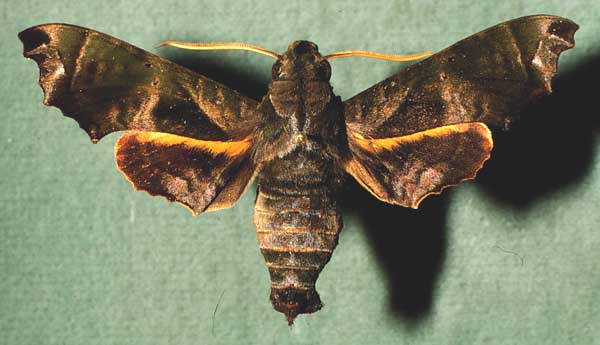
Nyceryx tacita male, Costa Rica, courtesy of Dan Janzen.
This site has been created by Bill Oehlke.
Comments, suggestions and/or additional information are welcomed by Bill.
TAXONOMY:
Family: Sphingidae, Latreille, 1802
Subfamily: Macroglossinae, Harris, 1839
Tribe: Dilophonotini, Burmeister, 1878
Genus: Nyceryx Boisduval, [1875] ...........
Species: tacita Druce, 1888
|
DISTRIBUTION:
Nyceryx tacita (approx. wingspan: 67mm)
flies from
Mexico;
Guatemala (JM);
and Costa Rica: Puntarenas: San Luis (CP); probably throughout CR; and
Panama, the specimen type locality; to
Colombia: Cundinamarca (RTN);
Venezuela: (Barinas; Merida, Venezuela (JRAC));
Bolivia.
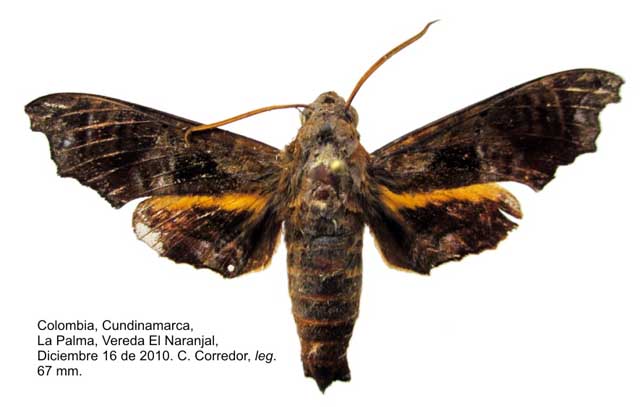
Nyceryx tacita, Cundinamarca, Colombia,
67mm, December 16, 2010, courtesy of Rodrigo Torres Nunez, id by Bill Oehlke.
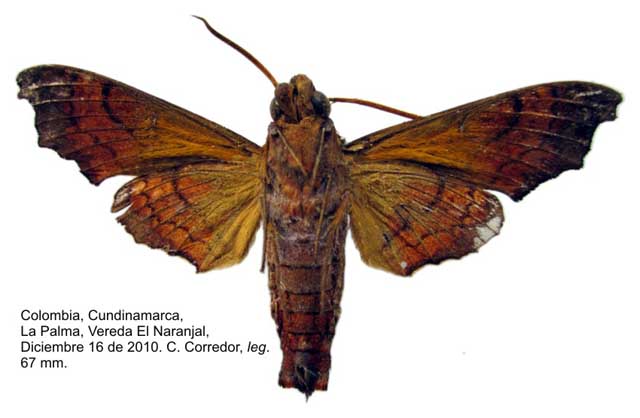
Nyceryx tacita (verso), Cundinamarca, Colombia,
67mm, December 16, 2010, courtesy of Rodrigo Torres Nunez, id by Bill Oehlke.
Nyceryx clarki is now, I believe, considered as a synonym of tacita.
FLIGHT TIMES:
Moths are probably on the wing in just
about every month. No records for January or March in Costa Rica.
Rodrigo Torrez Nunez reports a December 16, 2010, flight in Cundinamarca, Colombia.
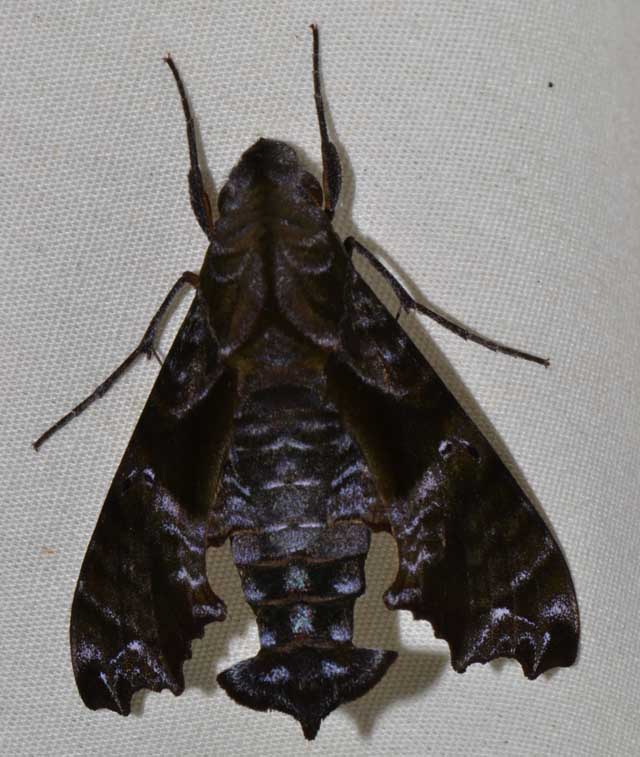
Nyceryx tacita, San Luis, Puntarenas, Costa Rica,
June 26, 2012, courtesy of Cameron Prybol, id by Bill Oehlke.

Nyceryx tacita (verso), San Luis, Puntarenas, Costa Rica,
June 26, 2012, courtesy of Cameron Prybol, id by Bill Oehlke.
ECLOSION:
Adults eclose, usually within three to five
weeks from pupation date.
SCENTING AND MATING:
Females call in the males with a
pheromone released from a gland at the tip of the abdomen.
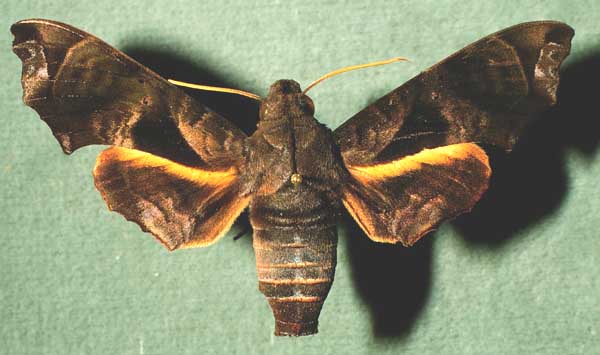
Nyceryx tacita female, Costa Rica, courtesy of Dan Janzen.
EGGS, LARVAE, PUPAE:Larvae feed on
Pentagonia donnell-smithii, and Chimarrhis parviflora.
Late instar larvae take on more colouration. The head region becomes quite distinctive.
Dan Janzen images. Pupa is smooth and shiny with some creases around the thorax.
| 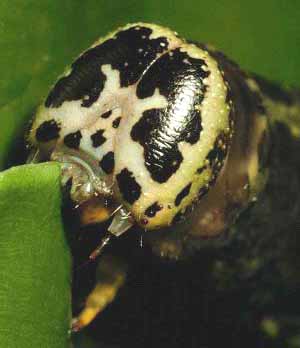 |
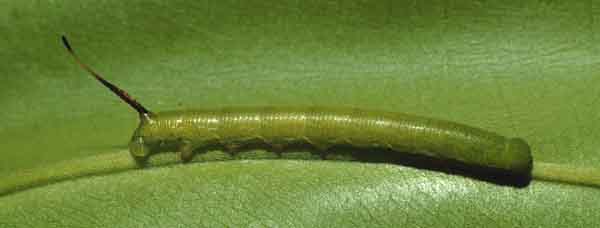

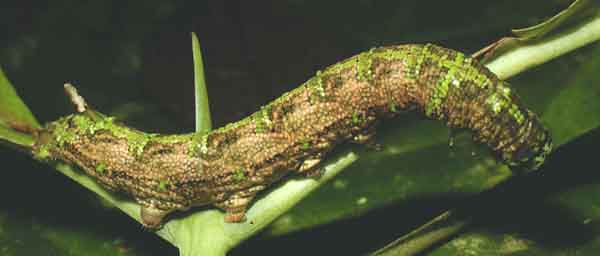

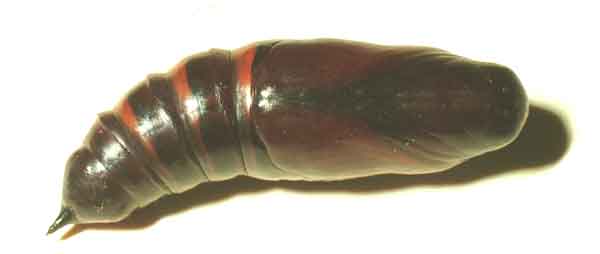
Moths eclose from pupae within three to five weeks for July-August
flights.
Return to Sphingidae Index
Return to Dilophonotini Tribe
Goto South American Index
Use your browser "Back" button to return to the previous page.
This page is brought to you by Bill Oehlke and the
WLSS. Pages are on space rented from Bizland. If you would like
to become a "Patron of the Sphingidae Site", contact Bill.
Please send sightings/images to Bill. I will do my best to respond to
requests for identification help.
Enjoy one of nature's wonderments: Live
Saturniidae (Giant Silkmoth) cocoons.
 | 
Show appreciation for this site by clicking on flashing butterfly to the left.
The link will take you to a page with links to many insect sites. |













